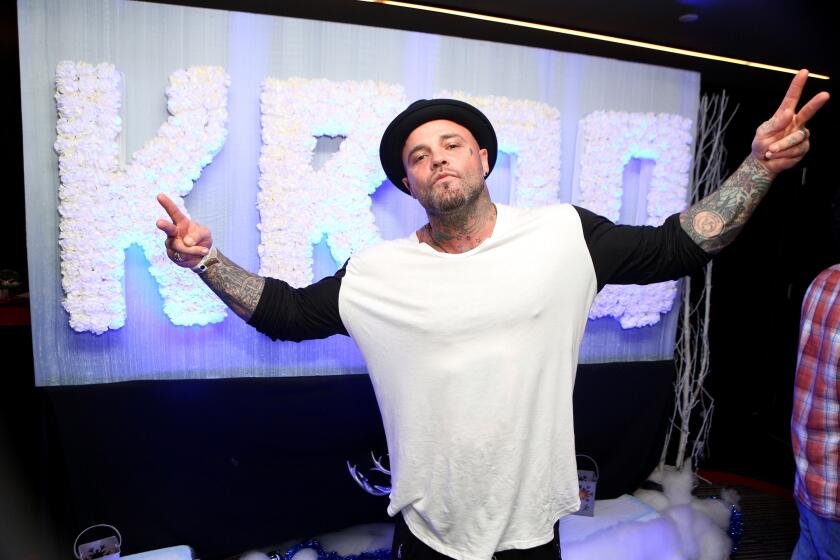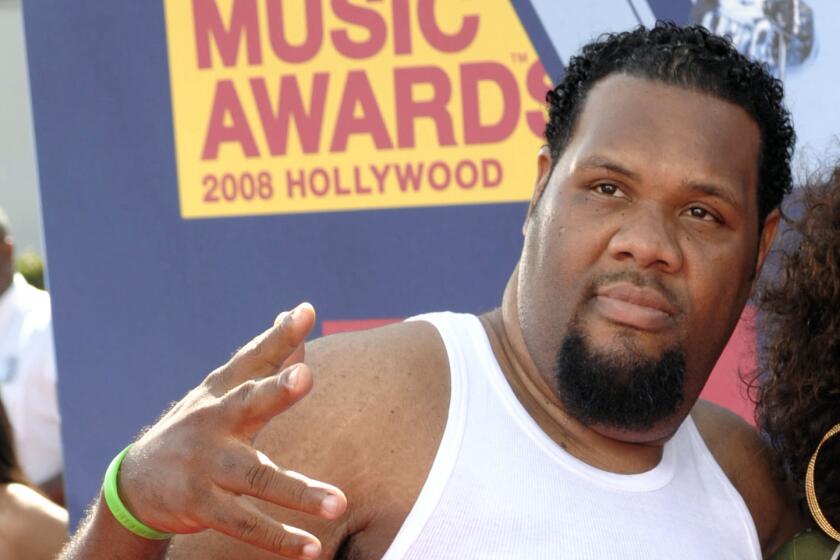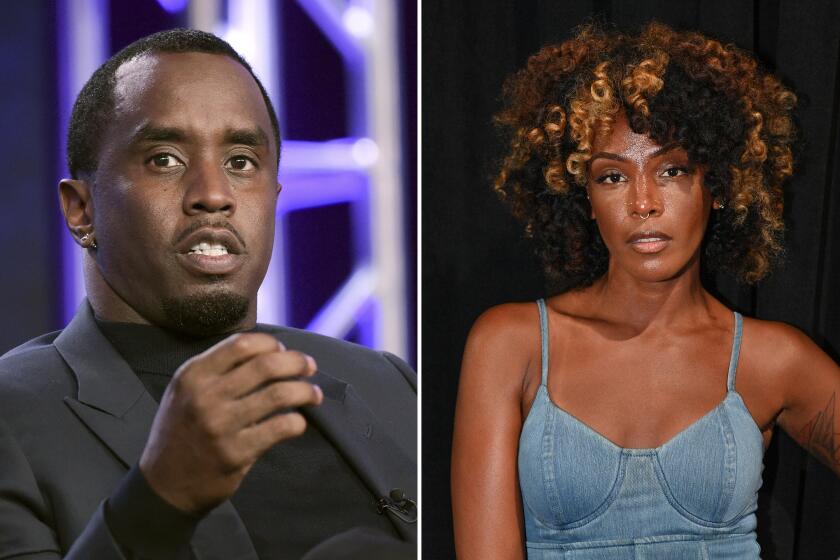But is it good for pop?
IF “American Idol” were really first and foremost a singing competition, as Simon Cowell keeps grousing it is, we’d all be talking about Melinda Doolittle’s near-flawless, jazz-inflected performances, for music lovers the true highlight of the No. 1-rated show’s sixth season.
Instead, America is engaged in a national debate about Sanjaya Malakar’s hair.
Last week the teenager with the big smile, thin voice and ever-changing coif waltzed into “Idol’s” Top 8, the latest evidence that the singing competition is becoming less about, um, singing and more about seemingly tangential distractions, such as personal charm and spectacular ponyhawks.
But let’s not single out Sanjaya for diminishing “Idol’s” musical cred. It’s worth asking whether the show, for all the prime-time entertainment it provides, might be crimping the sort of musical innovation that could revive pop as a whole.
As every viewer knows, the trivial and the distracting are always close at hand on “Idol.” Earlier this season, Cowell and host Ryan Seacrest raised eyebrows by escalating their perennial gay-baiting insults. Last year, topic A was whether judge Paula Abdul was having some sort of substance-induced meltdown.
All this drama is undoubtedly making Fox’s show more popular; after all, it’s hitting record ratings at a time when most hit scripted shows are limping out to the pastureland of syndication.
But is it just coincidence that “Idol’s” Nielsen conquest is reaching a crescendo while the music industry it purports to showcase is hitting the skids? Few people argue that the show isn’t good, even great, television. But could it be that as good as “Idol” is for network TV -- or at least for the Fox network -- it’s bad for music?
Nic Harcourt, host of KCRW’s influential music program “Morning Becomes Eclectic,” ignored “Idol” for years but finally started to watch this season, partly because his girlfriend is a fan. “I don’t think it has anything to do with music,” Harcourt said of “Idol.” “It’s not about selling records or even creating stars. It’s about creating a successful TV program.” (Still, Harcourt, like every other viewer, has his own opinions of the finalists: “Right now, two of the guys need to go,” he declared, naming Sanjaya and “the bald guy” -- i.e., Phil Stacey).
Grammy telecast producer Ken Ehrlich faults “Idol” for eroding originality and producing too many singers who are trying to sound like Mariah Carey or other existing stars. “There’s a limited amount of shelf space for new music, for new acts,” Ehrlich told me. “Idol’s” success may make it harder for “future acts that have any originality, that aren’t clones and sound-alikes, to break through.”
“Idol’s” producers disagree.
“I think ‘Idol’ is great for the music business,” said Cecile Frot-Coutaz, chief executive of show producer Fremantle Media North America. Attitude and looks have always played a big role in pop, she said: “Nobody ever does well just based on technical skills, whatever you do in life.” And although the music industry certainly has problems, she added, that’s in large part because of the huge costs of promoting new acts -- exactly the sort of issue “Idol” has helped address for Sony BMG, which controls the rights to contestants’ recorded work.
“They sell millions and millions of albums off the show,” Frot-Coutaz said. “That’s because they have a 19-week pre-promotional platform.”
There is no doubt that “Idol” has helped spawn successful careers; past winners Kelly Clarkson and Carrie Underwood, not to mention last year’s fourth-place contestant, rocker Chris Daughtry, have all yielded platinum albums.
On the other hand, “Idol” has produced its fair share of marketing letdowns, including past winners Ruben Studdard, Fantasia Barrino and Taylor Hicks, whose debut disc had a strong sales start in December but showed little staying power.
Music may be a key driver of “Idol,” then, but it’s clearly not the only one -- just ask Sanjaya’s stylist. And the show’s attempts to plug into today’s music (the judges this season, for example, have repeatedly complimented Blake Lewis for his “beatbox” style) aren’t always persuasive. After all, “Idol” attempts to introduce the world to young performers by having them sing ... old songs.
The celebrity pros who coach the contestants often have dust in the trophy case; this season, old-timers like Diana Ross and Peter Noone of Herman’s Hermits have turned up, and last year it was Kenny Rogers and Barry Manilow (to be fair, artists with current hits like Gwen Stefani and Shakira have also appeared).
On Tuesday’s episode, the contestants were shown earnestly soaking up singing tips from 80-year-old Tony Bennett -- but at least two of them (LaKisha Jones and Haley Scarnato) pointedly ignored his advice when performing their live versions of American standards.
The paradox of newbies singing oldies sometimes leads Cowell to rip a contestant as “karaoke.” By that he means an uninspired cover of a familiar tune. But to a certain degree all of the singing on “Idol” is little more than high-class karaoke. The nature of the competition (abbreviated performance times, each performer’s choice of one and only one song each week, a backup band that serves all the contestants) make anything else impossible.
At a time when the pop music business is looking for the next great stylistic breakthrough -- or at least, it should be -- the most popular show on TV is looking backward, to the hits of the past.
“Nostalgia’s always been a really strong element in the show,” said Katherine Meizel, a UCSB grad student in musicology whose doctoral dissertation is titled “America Singing: The Mediation of Identity Politics in ‘American Idol’ ” (she also helps out with an “Idol” blog at the online magazine Slate).
Even some music fans who have misgivings about “Idol” say that emphasis on nostalgia isn’t entirely bad. “What I do like about the show,” Ehrlich said, “is that it lends credence to the fact that the great songs of the past continue to live. It does reintroduce those great songs to new ears.”
But really, how likely is it that “Idol” fans will savor the subtle charms of, say, the 1930 George Gershwin standard “I Got Rhythm,” which Doolittle revived last week, when there’s an oddity like Sanjaya to obsess over? Is it true Howard Stern is behind his unlikely endurance in the contest? Or maybe it’s Indian call-center workers who are madly phoning in their votes, to quote one unsubstantiated rumor from last week. Who needs to talk about music when there’s enough other pop-cultural meat in “Idol” to fill a dissertation?
Of course, someone’s already doing just that.
Meizel, who’s banking her own career on interpreting the manifold sociological meanings of “Idol,” chuckles over the reaction of her faculty advisor to an early draft of the dissertation. “You know,” he said to her, “you really need to talk more about music.”
*
The Channel Island column runs every Monday in Calendar. Contact Scott Collins at scott.collins@latimes.com
More to Read
The biggest entertainment stories
Get our big stories about Hollywood, film, television, music, arts, culture and more right in your inbox as soon as they publish.
You may occasionally receive promotional content from the Los Angeles Times.











